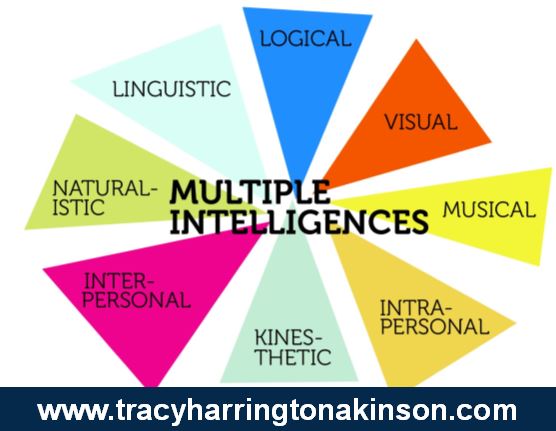From pre-school through higher education, teaching methods lend themselves to the enhancement of content areas. Yet, these techniques should be weighed for their unique strengths and weaknesses as they contribute to student understanding as well as how they relate to the goals and objectives of the course. Their implementation in education should be carefully evaluated when determining how to best meet the needs of each student. The connection of these techniques to content and student learning styles characterizes a good educator. 
Strengths of the Multiple Intelligences Choice Board:
- highlight the importance of the individual student (Gardner, 2006).
- Students feel their value and worth (Gardner, 2006).
- more success and greater desire to continue on to be successful students (Gardner, 2006).
- develop into lifelong learners (Gardner, 2006).
- target the individual learning styles of each student (Gardner, 2006).
- Students will feel inspired, motivated and possess a self-efficacy (Kosanovich, Ladinsky, Nelson & Torgesen, 2013).
- successful application of knowledge (Kosanovich, Ladinsky, Nelson & Torgesen, 2013).
- clearly written objectives (Thousand, Villa & Nevin, 2007).
- increases communication between educators and students (Thousand, Villa & Nevin, 2007).
- provides a variety of learning opportunities (Thousand, Villa & Nevin, 2007).
- matches activities to address content with learning personalities (Thousand, Villa & Nevin, 2007).
- experience for students in different learning personalities (Thousand, Villa & Nevin, 2007).
- provides for a layered curriculum (Thousand, Villa & Nevin, 2007).

Click on image to review book.
Weaknesses of the Multiple Intelligences Choice Board:
- need to focus on a range of personalities instead of continually addressing one learning style (Thousand, Villa & Nevin, 2007).
- requires several objectives for lessons (Thousand, Villa & Nevin, 2007).
- can be time consuming (Thousand, Villa & Nevin, 2007).
- requires a significant amount of planning and preparation time (Thousand, Villa & Nevin, 2007).
- Too many objectives, using a variety of the MI principles, may lead to students focusing on what needs to be learned and not on the incidental peripheral learning (Thousand, Villa & Nevin, 2007).
- tendency to pigeonhole students (Thousand, Villa & Nevin, 2007).
Value of the Multiple Intelligences Choice Board:
- makes educators focus on higher thinking skills instead of residing in the lowest categories of Bloom’s taxonomy (Thousand, Villa & Nevin, 2007).
- provides opportunities to focus on content to be used for learning not just content, teaching students lifelong learning skills (Thousand, Villa & Nevin, 2007).
Application of the Multiple Intelligences Choice Board:
This method easily is integrated into every lesson planning session and teaching moment. It can be used as a quick reference to help educators keep attention on different learning personalities as it provides a quick checklist for both questioning and activities. These questions and activities are aligned with the specific learning styles as created by Howard Gardner (2006).
| Intelligence | Sample Ways to Access Content |
| Verbal/linguistic | oral presentations
speeches books newspapers internet search tape recorders reports book on tape |
| Logical/Mathematical | calculators/other technology
math manipulatives timelines outlines lab experiments puzzles formulas math games |
| Visual/Spatial | graphs
concept maps graphic organizers videos powerpoint presentations cameras Legos posters charts cartoons |
| Bodily/Kinesthetic | field trips
building tools hands-on-tactile learning multisensory learning manipulatives role playing acting cooperative learning experiments sports/games sports equipment |
| Musical/Rhythmic | songs
raps jingles rhymes mnemonic devices poetry musical instruments tape recorder |
| Naturalist | plants
animals field trips identifying elements of and/or relationships to nature gardening tools naturalists’ tools |
| Interpersonal/People Smart | think-pair-share activities
cooperative group learning role play debate co-teaching board games props for role play party supplies |
| Intrapersonal/Self Smart | journals
diaries self-monitoring materials materials for projects |
Multiple Intelligences Choice Board by Thousand, J., Villa, R. & Nevin, A. (2007). Differentiating instruction: Collaboratively planning and teaching for universally designed learning. Thousand Oaks, CA: Corwin Press. p. 68-69.
Sources:
Gardner, H. (2006). Multiple Intelligences. New York, New York: Basic Books.
Kosanovich, M., Ladinsky, K., Nelson, L., & Torgesen, J. (2013). Differentiated reading instruction: small group alternative lesson structures for all students. Retrieved from www.fcrr.org/assessment/pdf/smallgroupalternativelessonstructures.pdf
Moore, K. D. (2012). Effective instructional strategies: From theory to practice (3rd ed.). Thousand Oaks, CA:Sage Publications.
Thousand, J., Villa, R. & Nevin, A. (2007). Differentiating instruction: Collaboratively planning and teaching for universally designed learning. Thousand Oaks, CA: Corwin Press.
By Tracy Harrington-Atkinson
Tracy Harrington-Atkinson, mother of six, lives in the Midwest with her husband. She is a teacher, having taught elementary school to higher education, holding degrees in elementary education, a master’s in higher education and continued on to a PhD in curriculum design. She has published several titles, including Calais: The Annals of the Hidden, Lemosa: The Annals of the Hidden, Book Two, Rachel’s 8 and Securing Your Tent. She is currently working on a non-fiction text exploring the attributes of self-directed learners: The Five Characteristics of Self-directed Learners.

Comments are closed